NEETS Module 9 - Introduction to Wave- Generation and Wave-Shaping
Pages i,
1-1,
1-11,
1-21,
1-31,
1-41,
2-1,
2-11,
2-21,
2-31,
3-1,
3-11,
3-21,
3-31,
3-41,
3-51,
4-1,
4-11,
4-21,
4-31,
4-41,
4-51, Index
| - |
Matter, Energy,
and Direct Current |
| - |
Alternating Current and Transformers |
| - |
Circuit Protection, Control, and Measurement |
| - |
Electrical Conductors, Wiring Techniques,
and Schematic Reading |
| - |
Generators and Motors |
| - |
Electronic Emission, Tubes, and Power Supplies |
| - |
Solid-State Devices and Power Supplies |
| - |
Amplifiers |
| - |
Wave-Generation and Wave-Shaping Circuits |
| - |
Wave Propagation, Transmission Lines, and
Antennas |
| - |
Microwave Principles |
| - |
Modulation Principles |
| - |
Introduction to Number Systems and Logic Circuits |
| - |
- Introduction to Microelectronics |
| - |
Principles of Synchros, Servos, and Gyros |
| - |
Introduction to Test Equipment |
| - |
Radio-Frequency Communications Principles |
| - |
Radar Principles |
| - |
The Technician's Handbook, Master Glossary |
| - |
Test Methods and Practices |
| - |
Introduction to Digital Computers |
| - |
Magnetic Recording |
| - |
Introduction to Fiber Optics |
| Note: Navy Electricity and Electronics Training
Series (NEETS) content is U.S. Navy property in the public domain. |
Q-14. What is the identifying feature of a Colpitts oscillator?
Resistive-Capacitive (RC) Feedback Oscillator
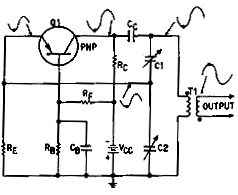
Figure 2-16 - Common-base Colpitts oscillator.

Figure 2-17 - Phase-shift oscillator.
As mentioned earlier, resistive-capacitive (RC) networks provide regenerative
feedback and determine the frequency of operation in Resistive-capacitive (RC) oscillators.
The oscillators presented in this chapter have used resonant tank circuits (LC).
You should already know how the LC tank circuit stores energy alternately in the
inductor and capacitor.
The major difference between the LC and RC oscillator is that the frequency-determining
device in the RC oscillator is not a tank circuit. Remember, the LC oscillator can
operate with class a or C biasing because of the oscillator action of the resonant
tank. The RC oscillator, however, must use class a biasing because the RC frequency-determining
device doesn't have the oscillating ability of a tank circuit.
An RC Feedback or Phase-Shift oscillator is shown in figure 2-17. Components
C1, R1, C2, R2, C3, and RB are the feedback and frequency-determining network.
This RC network also provides the needed phase shift between the collector and base.
Phase-Shift Oscillators
The Phase-Shift Oscillator, shown in figure 2-17, is a sine-wave generator that uses a resistive-capacitive (RC) network as its frequency-determining device.
As discussed earlier in the common-emitter amplifier configuration (figure 2-17),
there is a 180-degree phase difference between the base and the collector signal.
To obtain the regenerative feedback in the phase-shift oscillator, you need a phase
shift of 180 degrees between the output and the input signal. An RC network consisting
of three RC sections provides the proper feedback and phase inversion to provide
this regenerative feedback. Each section shifts the feedback signal 60 degrees in
phase.
Since the impedance of an RC network is capacitive, the current flowing through
it leads the applied voltage by a specific phase angle. The phase angle is determined
by the amount of resistance and capacitance of the RC section.
If the capacitance is a fixed value, a change in the resistance value will change
the phase angle. If the resistance could be changed to zero, we could get a maximum
phase angle of 90 degrees. But since a voltage cannot be developed across zero resistance,
a 90-degree phase shift is not possible.
With a small value of resistance, however, the phase angle or phase shift is
less than 90 degrees. In the phase-shift oscillator, therefore, at least three RC
sections are needed to give the required 180-degree phase shift for regenerative
feedback. The values of resistance and capacitance are generally chosen so that
each section provides about a 60-degree phase shift.
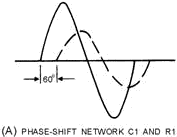
Figure 2-18A. - Three-section, phase-shifting RC network. Phase-SHIFT
Network C1 and R1.
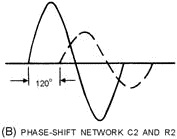
Figure 2-18B. - Three-section, phase-shifting RC network. Phase-SHIFT
Network C2 and R2.
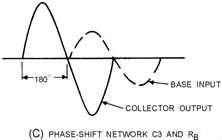
Figure 2-18C - Three-section, phase-shifting RC network. Phase-SHIFT
Network C3 and RB.

Figure 2-19 - Quartz crystal cuts.
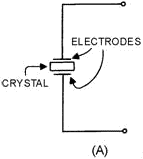
Figure 2-20A - Quartz crystal and equivalent circuit.
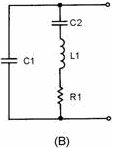
Figure 2-20B - Quartz crystal and equivalent circuit.
Resistors RB, RF, and RC provide base
and collector bias. Capacitor CE bypasses ac variations around
the emitter resistor RE. Capacitors C1, C2, and C3 and resistors R1,
R2, and RB form the feedback and phase-shifting network. Resistor
R2 is variable for fine tuning to compensate for any small changes in value of the
other components of the phase-shifting network.
When power is applied to the circuit, oscillations are started by any random
noise (random electrical variations generated internally in electronic components).
a change in the flow of base current results in an amplified change in collector
current which is phase-shifted the 180 degrees. When the signal is returned to the
base, it has been shifted 180 degrees by the action of the RC network, making the
circuit regenerative. View (A) of figure 2-18 shows the amount of phase shift
produced by C1 and R1. View (B) shows the amount of phase shift produced by C2 and
R2 (signal received from C1 and R1), and view (C) shows the complete phase shift
as the signal leaves the RC network. With the correct amount of resistance and capacitance
in the phase-shifting network, the 180-degree phase shift occurs at only one frequency.
At any other than the desired frequency, the capacitive reactance increases or decreases
and causes an incorrect phase relationship (the feedback becomes degenerative).
Thus, the oscillator works at only one frequency. To find the resonant frequency
(fr) of an RC phase shift oscillator, use the following formula:
 , where n is the number
of RC sections. , where n is the number
of RC sections.
A high-gain transistor must be used with the three-section RC network because
the losses in the network are high. Using more than three RC sections actually reduces
the overall signal loss within the network. This is because additional RC sections
reduce the phase shift necessary for each section, and the loss for each section
is lowered as the phase shift is reduced. In addition, an oscillator that uses four
or more RC networks has more stability than one that uses three RC networks. In
a four-part RC network,
each part shifts the phase of the feedback signal by approximately 45 degrees
to give the total required
180-degree phase shift.
Q-15. Which components provide the regenerative feedback signal in
the phase-shift oscillator?
Q-16. Why is a high-gain transistor used in the phase-shift oscillator?
Q-17. Which RC network provides better frequency stability, three-section
or four-section?
Crystal Oscillators
Crystal oscillators are those in which a specially-cut crystal controls the frequency.
Crystal- Controlled Oscillators are the standard means used for maintaining the
frequency of radio transmitting stations within their assigned frequency limits.
a crystal-controlled oscillator is usually used to produce an output which is highly
stable and at a very precise frequency.
As stated earlier, crystals used in electrical circuits are thin sheets cut from
the natural crystal and are ground to the proper thickness for the desired resonant
frequency. For any given crystal cut, the thinner the crystal, the higher the resonant
frequency. The "cut" (X, Y, AT, and so forth) of the crystal means the precise way
in which the usable crystal is cut from the natural crystal. Some typical crystal
cuts may be seen in figure 2-19.
Transmitters which require a very high degree of frequency stability, such as
a broadcast transmitter, use temperature-controlled ovens to maintain a constant
crystal temperature. These ovens are thermostatically controlled containers in which
the crystals are placed.
The type of cut also determines the activity of the crystal. Some crystals vibrate
at more than one frequency and thus will operate at harmonic frequencies. Crystals
which are not of uniform thickness may have two or more resonant frequencies. Usually
one resonant frequency is more pronounced than the others. The other less pronounced
resonant frequencies are referred to as SPURIOUS frequencies. Sometimes such a crystal
oscillates at two frequencies at the same time.
The amount of current that can safely pass through a crystal ranges from 50 to
200 milliamperes. When the rated current is exceeded, the amplitude of mechanical
vibration becomes too great, and the crystal may crack. Overloading the crystal
affects the frequency of vibration because the power dissipation and crystal temperature
increase with the amount of load current.
Crystals as Tuned Circuits
a quartz crystal and its equivalent circuit are shown in figure 2-20, views (A)
and (B). Capacitor C2, inductor L1, and resistor R1 in view (B) represent the electrical
equivalent of the quartz crystal in view (A). Capacitance C1 in (view B) represents
the capacitance between the crystal electrodes in view (A). Depending upon the circuit
characteristics, the crystal can act as a capacitor, an inductor, a series-tuned
circuit, or a parallel-tuned circuit.
At some frequency, the reactances of equivalent capacitor C1 and inductor L will
be equal and the crystal will act as a series-tuned circuit. a series-tuned circuit
has a minimum impedance at resonance (figure 2-21). Above resonance the series-tuned
circuit acts INDUCTIVELY, and below resonance it acts CAPACITIVELY. In other words,
the crystal unit has its lowest impedance at the series-resonance frequency. The
impedance increases as the frequency is lowered because the unit acts as a capacitor.
The impedance of the crystal unit also increases as the frequency is raised above
the series-resonant point because the unit acts as an inductor. Therefore, the crystal
unit reacts as a series-tuned circuit.
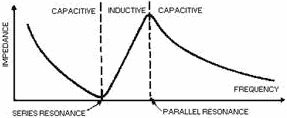
Figure 2-21 - Frequency response of a crystal.
Since the series-tuned circuit acts as an inductor above the resonant point,
the crystal unit becomes equivalent to an inductor and is parallel with the equivalent
capacitor C1 (view (B) of figure 2-20). At some frequency above the series-resonant
point, the crystal unit will act as a parallel-tuned circuit. a parallel-tuned circuit
has a Maximum impedance at the parallel-resonant frequency and acts inductively
below parallel resonance (figure 2-21). Therefore, at some frequency, depending
upon the cut of the crystal, the crystal unit will act as a parallel-tuned circuit.
The frequency stability of crystal-controlled oscillators depends on the Q of
the crystal. The Q of a crystal is very high. It may be more than 100 times greater
than that obtained with an equivalent electrical circuit. The Q of the crystal is
determined by the cut, the type of holder, and the accuracy of grinding. Commercially
produced crystals range in Q from 5,000 to 30,000 while some laboratory experiment
crystals range in Q up to 400,000.
Crystal-Controlled Armstrong Oscillator

Figure 2-22 - Crystal-controlled Armstrong oscillator.
The crystal-controlled Armstrong oscillator (figure 2-22) uses the series-tuned
mode of operation. It works much the same as the Hartley oscillator except that
frequency stability is improved by the crystal (in the feedback path). To operate
the oscillator at different frequencies, you simply change crystals (each crystal
operates at a different frequency).
Variable capacitor C1 makes the circuit tunable to the selected crystal frequency.
C1 is capable of tuning to a wide band of selected crystal frequencies. Regenerative
feedback from the collector to base is through the mutual inductance between the
transformer windings of T1. This provides the necessary 180-degree phase shift for
the feedback signal. Resistors R B, RF, and RC provide the base and collector bias
voltage. Capacitor CE bypasses ac variations around emitter resistor RE.
At frequencies above and below the series-resonant frequency of the selected
crystal, the impedance of the crystal increases and reduces the amount of feedback
signal. This, in turn, prevents oscillations at frequencies other than the series-resonant
frequency.
Crystal-Controlled Pierce Oscillator
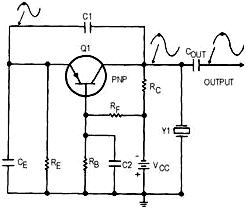
Figure 2-23 - Pierce oscillator, common-base configuration.
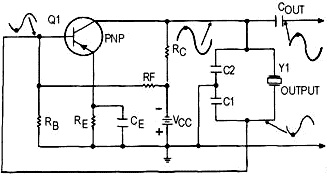
Figure 2-24 - Pierce oscillator, common-emitter configuration.
The crystal-controlled Pierce Oscillator uses a crystal unit as a parallel-resonant
circuit. The Pierce oscillator is a modified Colpitts oscillator. They operate in
the same way except that the crystal unit replaces the parallel-resonant circuit
of the Colpitts.
Figure 2-23 shows the common-base configuration of the Pierce oscillator. Feedback
is supplied from the collector to the emitter through capacitor C1. Resistors RB,
RC, and RF provide the proper bias conditions for the circuit and resistor RE
is the emitter resistor. Capacitors C1 and CE form a voltage divider connected
across the output. Since no phase shift occurs in the common-base circuit, capacitor
C1 feeds back a portion of the output signal to the emitter without a phase shift.
The oscillating frequency is determined not only by the crystal but also by the
parallel capacitance caused by capacitors C1 and CE. This parallel capacitance affects
the oscillator frequency by lowering it. Any change in capacitance of either C1
or CE changes the frequency of the oscillator.
Figure 2-24 shows the common-emitter configuration of the Pierce oscillator.
The resistors in the circuit provide the proper bias and stabilization conditions.
The crystal unit and capacitors C1 and C2 determine the output frequency of the
oscillator. The signal developed at the junction between Y1 and C1 is 180 degrees
out of phase with the signal at the junction between Y1 and C2. Therefore, the signal
at the Y1-C1 junction can be coupled back to the base of Q1 as a regenerative feedback
signal to sustain oscillations.
Q-18. What is the impedance of a crystal at its resonant frequency
when it is used in the parallel mode?
Q-19. What is the impedance of a crystal at its resonant frequency
when it is used in the series mode?
Pulsed Oscillators
A sinusoidal (sine-wave) oscillator is one that will produce output pulses at
a predetermined frequency for an indefinite period of time; that is, it operates
continuously. Many electronic circuits in equipment such as radar require that an
oscillator be turned on for a specific period of time and that it remain in an off
condition until required at a later time. These circuits are referred to as PULSED
Oscillators or RINGING Oscillators. They are nothing more than sine-wave oscillators
that are turned on and off at specific times.
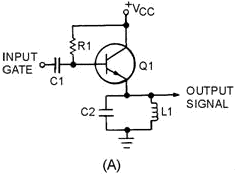
Figure 2-25A - Pulsed oscillator.
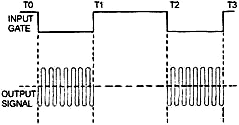
Figure 2-25B - Pulsed oscillator.
Figure 2-25, view (A), shows a pulsed oscillator with the resonant tank in the
emitter circuit. a positive input makes Q1 conduct heavily and current flow through
L1; therefore no oscillations can take place. a negative-going input pulse (referred
to as a gate) cuts off Q1, and the tank oscillates until the gate ends or until
the ringing stops, whichever comes first.
The waveforms in view (B) show the relationship of the input gate and the output
signal from the pulsed oscillator. To see how this circuit operates, assume that
the Q of the LC tank circuit is high enough to prevent damping. An output from the
circuit is obtained when the input gate goes negative (T0 to T1 and T2 to T3). The
remainder of the time (T1 to T2) the transistor conducts heavily and there is no
output from the circuit. The width of the input gate controls the time for the output
signal. Making the gate wider causes the output to be present (or ring) for a longer
time.
Frequency of a Pulsed Oscillator
The frequency of a pulsed oscillator is determined by both the input gating signal
and the resonant frequency of the tank circuit. When a sinusoidal oscillator is
resonant at 1 megahertz, the output is 1 million cycles per second. In the case
of a pulsed oscillator, the number of cycles present in the output is determined
by the gating pulse width.
If a 1-megahertz oscillator is cut off for 1/2 second, or 50 percent of the time,
then the output is 500,000 cycles at the 1 -megahertz rate. In other words, the
frequency of the tank circuit is still 1 megahertz, but the oscillator is only allowed
to produce 500,000 cycles each second.
The output frequency can be determined by controlling how long the tank circuit
will oscillate. For example, suppose a negative input gate of 500 microseconds and
a positive input gate of 999,500 microseconds (total of 1 second) are applied. The
transistor will be cut off for 500 microseconds and the tank circuit will oscillate
for that 500 microseconds, producing an output signal. The transistor will then
conduct for 999,500 microseconds and the tank circuit will not oscillate during
that time period. The 500 microseconds that the tank circuit is allowed to oscillate
will allow only 500 cycles of the 1-megahertz tank frequency.
You can easily check this frequency by using the following formula:

One cycle of the 1-megahertz resonant frequency is equal to 1 microsecond.

Then, by dividing the time for 1 cycle (1 microsecond) into gate length (500
microseconds), you will get the number of cycles (500).
There are several different varieties of pulsed oscillators for different applications.
The schematic diagram shown in figure 2-25, view (A), is an emitter-loaded pulsed
oscillator. The tank circuit can be placed in the collector circuit, in which case
it is referred to as a collector-loaded pulsed oscillator. The difference between
the emitter-loaded and the collector-loaded oscillator is in the output signal.
The first alternation of an emitter-loaded npn pulsed oscillator is negative. The
first alternation of the collector- loaded pulsed oscillator is positive. If a pnp
is used, the oscillator will reverse the first alternation of both the emitter-loaded
and the collector-loaded oscillator.
You probably have noticed by now that feedback has not been mentioned in this
discussion. Remember that regenerative feedback was a requirement for sustained
oscillations. In the case of the pulsed oscillator, oscillations are only required
for a very short period of time. You should understand, however, that as the width
of the input gate (which cuts off the transistor) is increased, the amplitude of
the sine wave begins to decrease (dampen) near the end of the gate period because
of the lack of feedback. If a long period of oscillation is required for a particular
application, a pulsed oscillator with regenerative feedback is used. The principle
of operation remains the same except that the feedback network sustains the oscillation
period for the desired amount of time.
Q-20. Oscillators that are turned on and off at a specific time are
known as what type of oscillators?
Q-21. What is the polarity of the first alternation of the tank circuit
in an emitter-loaded npn pulsed
oscillator?
Harmonics
From your study of oscillators, you should know that the oscillator will oscillate
at the resonant frequency of the tank circuit. Although the tank circuit is resonant
at a particular frequency, many other frequencies other than the resonant frequency
are present in the oscillator. These other frequencies are referred to as Harmonics.
a harmonic is defined as a sinusoidal wave having a frequency that is a multiple
of the fundamental frequency. In other words, a sine wave that is twice that fundamental
frequency is referred to as the SECOND Harmonic.
What you must remember is that the current in circuits operating at the resonant
frequency is relatively large in amplitude. The harmonic frequency amplitudes are
relatively small. For example, the second harmonic of a fundamental frequency has
only 20 percent of the amplitude of the resonant frequency. a third harmonic has
perhaps 10 percent of the amplitude of the fundamental frequency.
One useful purpose of harmonics is that of frequency multiplication. It can be used in circuits to multiply the fundamental frequency to a higher frequency. The
need for frequency-multiplier circuits results from the fact that the frequency
stability of most oscillators decreases as frequency increases. Relatively good
stability can be achieved at the lower frequencies. Thus, to achieve optimum stability,
an oscillator is operated at a low frequency, and one or more stages of multiplication
are used to raise the signal to the desired operating frequency.
Posted January 5, 2022
|























